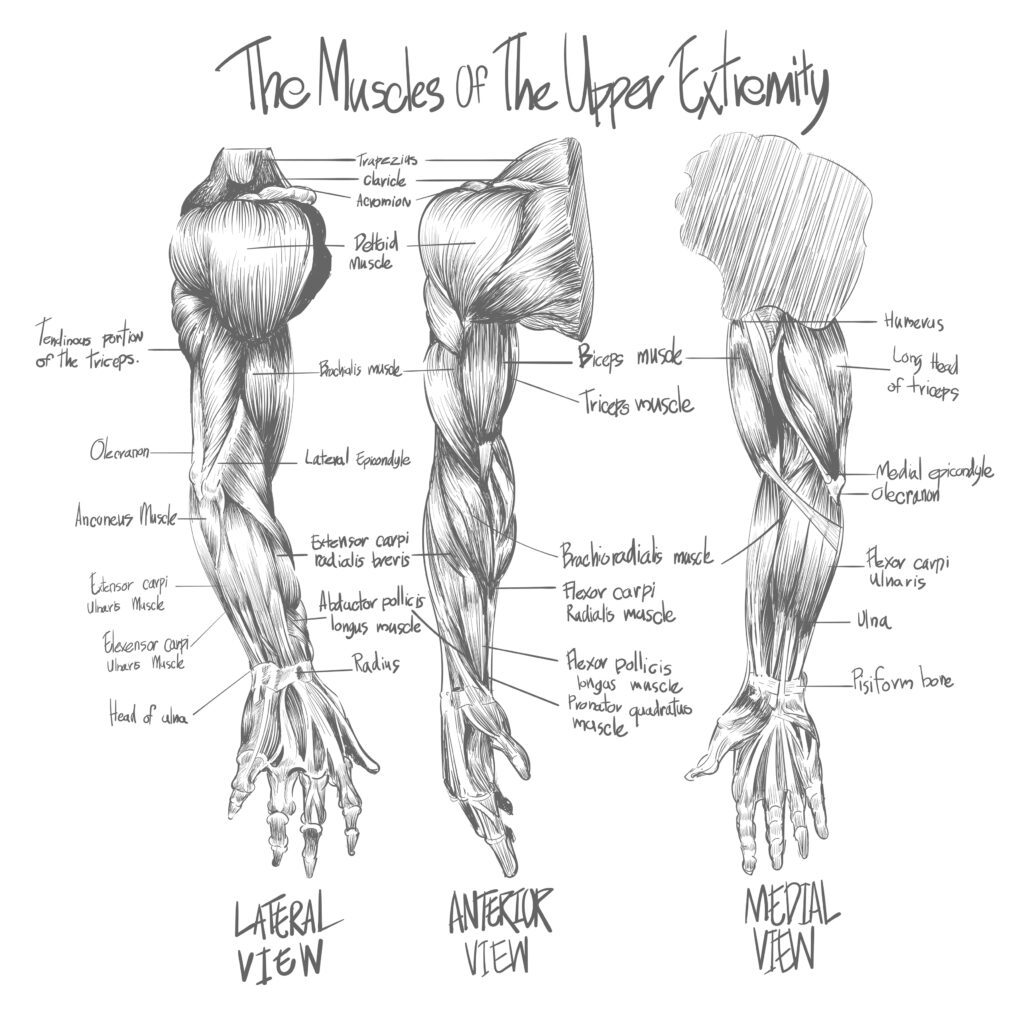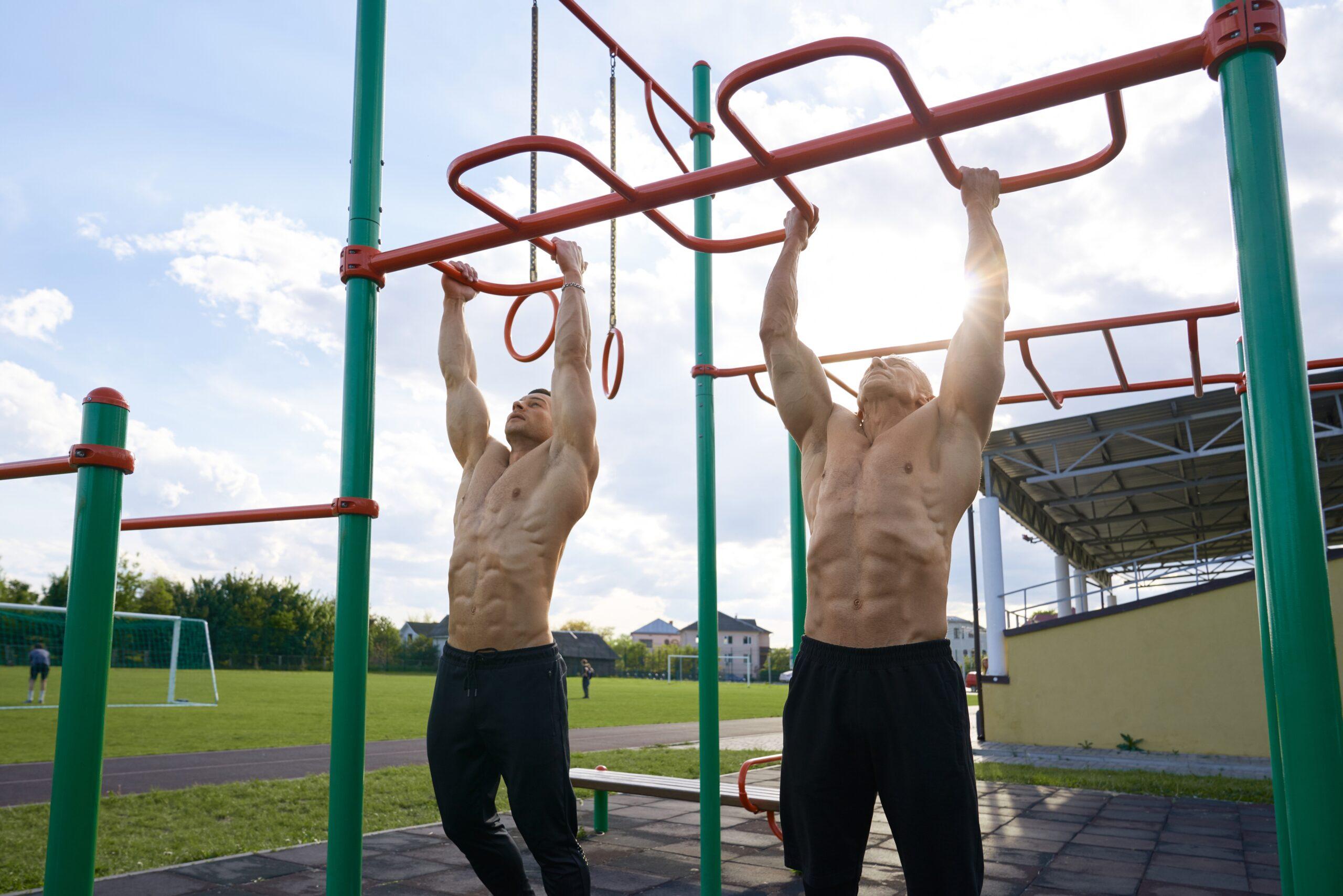Ever wondered if there’s a secret weapon for biceps training within your reach?
Consider the pull-up bar: a straightforward yet highly effective device for enhancing arm strength and muscle tone.
Plus, its convenient design allows for easy installation at home, even on a door frame, making it an accessible option for everyone.
What if I told you that, with each pull-up, you’re not just working your biceps but also giving your back muscles a solid workout?
Yes, it’s true – on a pull-up bar, isolating the biceps isn’t the goal, and that’s surprisingly beneficial.
Engaging both the biceps and the back muscles offers a time-efficient approach to not only enhancing bicep strength but also boosting overall upper body power.
Functions of the brachial biceps

Bear with me as we dive a bit into the anatomy of the brachial biceps.
Imagine a muscle zone that’s not just involved in one joint movement, but three – the glenohumeral, elbow, and radioulnar.
This area is a multitasking marvel in our anatomy.
Whether it’s flexing your forearm or aiding in arm adduction, the biceps are always involved.
It’s fascinating how the long head, situated on the lateral side, and the short head, on the medial side, work together to make all this possible.
And here’s an interesting note: in close association is the biceps brachialis, a separate yet integral muscle.
It’s a bi-articular muscle, influencing movements primarily at the shoulder and elbow joints.
This unique functionality of the biceps brachialis complements the multi-joint action of the brachial biceps, highlighting the importance of diverse exercises for comprehensive muscle development.
1. Standard Chin-Ups
Honestly, for anyone serious about biceps development, standard chin-ups are a revolutionary exercise.
By engaging a wider range of motion, you’re not only targeting your biceps but also your back.
It’s the perfect compound exercise with a supine grip to get those arm muscles working.
How to Nail the Perfect Chin-Up:
- Start by grabbing the bar with palms facing you, hands shoulder-width apart.
- Lift yourself until your chin is above the bar and your elbows are fully bent. Hold that position for a moment…
- Lower yourself back down in a controlled manner until your arms are fully extended.
RELATED:>>> Chin-Ups VS. Pull-Ups
2. Towel Chin-Ups
Want to shake up your usual chin-up routine?
Towel chin-ups not only work the same muscles as standard chin-ups but also seriously test your grip strength and stabilizers to prevent swinging.
Perfecting Towel Chin-Ups:
- Drape a towel over the bar at shoulder width.
- Grab each side of the towel with your palms facing you.
- Start with almost straight arms and bent legs.
- Pull yourself up as high as you can, trying to remain stable.
- Hold for 1-2 seconds, then lower back down slowly.
Chin-Up with Two Towels: Double the ChallengeTalk about a tough workout! Using two towels makes this version of chin-ups significantly more challenging. Here’s How:
|
3. Commando Chin-Up
Prepare yourself for a true strength challenge.
Commando chin-ups require more muscle power and balance, targeting your biceps and chest more intensely than standard pull-ups.
The Commando Technique:
- Grip the bar with one hand in front of the other, legs dangling, elbows slightly bent.
- Engage your core and pull up, aiming to touch the bar with your shoulder.
- Hold for a second, then return to the start.
- Repeat on the other side.
4. Isometric Chin-Up
Isometric chin-ups are great for building up to more advanced pull-up and chin-up variations.
Executing the Isometric Chin-Up:
- Grip the bar with palms facing you, shoulder-width apart.
- Keep your abs tight and legs extended, feet slightly forward.
- Pull up until your arms are at a 90-degree angle.
- Hold as long as you can. Aim for 6-10 seconds to start, and work up to longer.
For an extra challenge, add weights with a lifting belt.
5. Close Grip Australian Pull-Up
Picture this: a push-up but almost completely reversed.
That’s the essence of the Close Grip Australian Pull-Up.
By uniquely engaging your biceps and chest muscles, this workout adds a novel dimension to the classic pull-up regimen.
Mastering the Move:
- Find a solid bar at chest height.
- Stand under it and grab the bar (prone grip) just above waist height with your legs extended forward.
- Your hands should be very close, about 6-8 inches apart.
- Lift until your pecs nearly touch the bar, heels grounded.
- Hold, then return to start.
For beginners, believe me when I say, this approach is a game-changer, offering easier leverage than the usual pull-ups.
As you get stronger, try challenging yourself with a lower bar.
6. Single-Arm Australian Pull-Ups
Talk about upping the ante!
Single-arm Australian Pull-Ups are perfect for developing bigger biceps and balancing strength between your arms.
Here’s How:
- Grab the bar with one arm at chest height.
- Lift towards the bar until almost touching it, alternating arms.
- Keep one foot on the ground, opposite to the lifting arm.
This variant not only challenges your muscles but also significantly activates your core.
7. Headbanger Pull-Up
The Headbanger Pull-Up is a high-intensity variation that tones and strengthens your biceps like no other.
Executing the Headbanger:
- Grip the pull-up bar with palms up, shoulder-width apart.
- Hang with arms outstretched, legs dangling.
- Pull up until your chin is above the bar.
- Then, push away from the bar, extending your arms.
- Quickly pull forward back to the starting position. Repeat.
This explosive exercise is a true test of upper body strength, as you move your entire body weight against gravity.
8. L-Sit Pull-Up
Ever wondered how to take your pull-ups to the next level?
Enter the L-Sit Pull-Up.
This exercise is a step up, adding an isometric leg challenge to the classic pull-up, focusing on arm strength and engaging various abdominal muscles
How to Ace the L-Sit Pull-Up:
- Grab the pull-up bar with a prone grip, slightly wider than shoulder-width.
- Engage your abs and lift your legs to a 90-degree angle, forming an ‘L’ with your body.
- Pull yourself up, dropping your shoulder blades and driving your elbows down.
- Keep going until your chin is over the bar, feeling your lips fully engaged.
- Lower back to the start, slowly and controlled.
9. L-Sit Chin-Up Isometric Hold
The L-Sit Chin-Up Isometric Hold transcends typical exercise routines, serving as a crucial groundwork for delving into complex Calisthenics moves.
Mastering the L-Sit Chin-Up Isometric Hold:
- Start like you’re doing a chin-up, then bring your legs into the L-Sit position to form a 90-degree angle with your torso.
- Hold this position as long as possible. It’s a real test of strength and stability.
- For an extra challenge, try this on gymnastic rings. It’s tough, but the results are worth it.
10. Close Grip Pull-Ups
Sometimes, it’s the subtle changes that make all the difference.
The Close Grip Pull-up is one such exercise.
While it appears similar to the regular pull-up, the closer hand positioning transforms it into an intense workout for your arms, core, inner lats, and back.
Nailing the Close Grip Pull-Up:
- Start with a supinated grip on the bar, hands about 6-8 inches apart.
- Keep your core engaged and back straight as you lift your body.
- Aim to get your chin over the bar, then hold for a solid second.
- Gently lower back to the starting position.
Though it might look effortless, the strain your arms will experience tells a whole different story!
RELATED:>>> How to Increase Pull-Up Repetitions
Final Thoughts
In essence, the effectiveness of these workouts hinges on the amount of effort you invest in every lift.
These exercises, however, extend far beyond mere arm strengthening.
They are instrumental in developing strength and mass in your lats, sculpting your back, toning your torso, and enhancing your posture.
Always remember, with every pull and lift, you’re not just moving upwards; you’re building a stronger, more balanced version of yourself.


